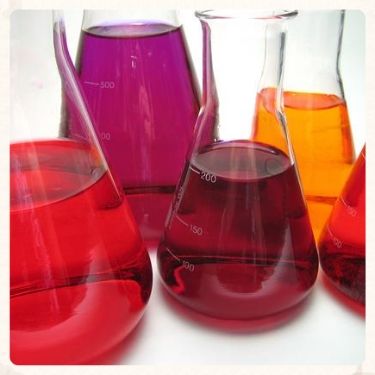This list is far from exhaustive, but should help get you familiar with common ingredients you may be staring down the next time you're reading your labels. Oh, and speaking of labels, "naturally sourced" is another term you should become familiar with. As with many other phrases that lack any legally enforced definition, be advised that "naturally sourced" ingredients does not mean plant derived or plant based.
Carmine
What it is: In a nut-shell, ground up insect bodies. Carmine creates a red coloring and is used as a dye. To create carmine, insect bodies are ground up and boiled to extract the carminic acid and various further chemical processes create color variations.How to spot it: Look for ingredients that read "crimson lake," "cochineal," or "natural red 4."
How to avoid it: Back in 2006, the FDA considered requiring products that contained carmine to call it just that: carmine. They were also considering requiring manufacturers to list that the product was insect-based. Needless to say, that did not go over well and the FDA ultimately bailed on the potential requirement. However, if you see "cochineal extract" or "carmine" listed, consider this code for insect-based.
Shellac
What it is: More bugs! It is actually an excretion of the female laccifer lacer bug and comes in various colors. It is used in cosmetics and hair products to provide shine, such as in hair spray or nail polish. If you're concerned about the environmental impact, The Vegetarian Resource Group estimates that 300,000 lac bugs are killed in the production of just 2.2 pounds worth of lac resin.How to spot it: Look for additive number "E904," "resinous glaze," and "confectioner's glaze" (in food).
How to avoid it: The ingredient "Zein" is a corn based alternative to shellac. If you find shiny products like lipsticks, glosses, etc., check to see if the product is vegan (no animal by-product use) or see if the shine is derived from another source, such as "Zein."
Lanolin
What it is: The word "lanolin" is actually from the Latin word "lāna" which means "wool" - "oleum" means "oily birth." Put that all together and you get an oily substance secreted by the oil glands of sheep. Although sheep are not usually killed to obtain the product, improper shearing of sheep has been the cause of death, disfigurement, pain and trauma in these animals.How to spot it: Lanolin is often listed as is: lanolin or lanolin oil. However, look for "lanosterols," "triterpene," "lanogene," or "laneth."
How to avoid it: Any time you see "sterols" listed, be wary of lanolin. If the ingredients state "plant sterols" it is a good indication that the oily substance is coming from plants. Since lanolin is generally used as an emollient, look for plant based oils like coconut oil and olive oil instead.
Guanine
What it is: Used to create a shimmery effect, guanine is extracted from fish scales and is most commonly found in nail polish. It's also used in eye shadows and skin care creams and serums.How to spot it: Guanine, like lanolin, is labeled as is. You may also see "hypoxanthine" or "2-aminohypoxanthine."
How to avoid it: "Mica" is a common mineral used to create that glittery effect we all know and love. "Bismuth" and "sericite" are other alternatives to look for when you see something shiny. If you have a sensitivity to mica, seek out "titanium dioxide" or "zinc oxide" which are common substitutes. Mica treated with "methicone" is another great way to avoid mica sensitivity AND guanine - win, win.
Apitoxin
What it is: Ever been stung by a bee? Then you have experienced the irritation and inflammation associated with apitoxin, or bee venom. It is believed that apitoxin increases blood flow and creates a plumping effect, so it is used in various skin care products and lip balms/glosses designed to plump lips/skin. The biggest concern for cruelty-free beauty lovers is that, once a bee stings, it dies. Recent findings suggest that bees are already in serious trouble as their numbers decline from pesticide usage and declining habitats.How to spot it: If it is apitoxin you're looking to avoid, watch out for "melittin," "apamin," and "adolapin."
How to avoid it: Fortunately (or perhaps unfortunately, depending on how you look at it) the makers of "bee venom" cosmetics and products are proudly touting the ingredient. Alternatives are easy to find, mostly herbs and spices that produce that tingly heat sensation: peppermint, cinnamon and menthol are all readily available.

No comments:
Post a Comment